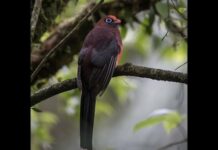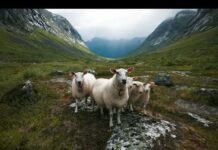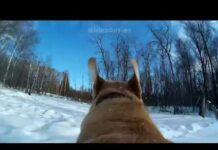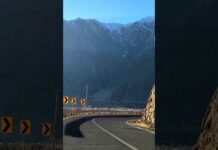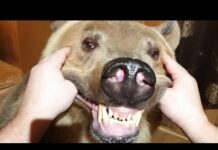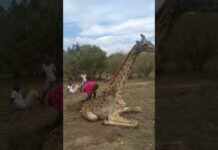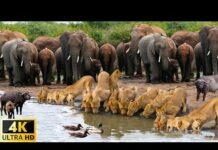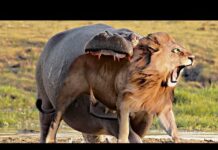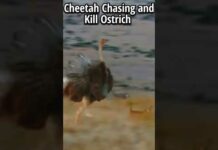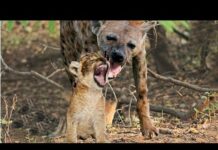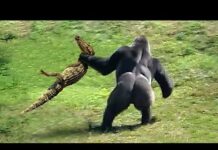Washington Department of Fish and Wildlife (WDFW) Director Kelly Susewind hosted a series of digital open houses this fall and winter to span topics of interest across Washington. Susewind and the region’s leadership staff, including Regional Director Brock Hoenes, provided updates on timely and local topics, and invite the public to ask questions.
“If you’ve ever wondered “why”, this is a chance to learn more,” said Susewind. “I enjoy the chance to connect with residents about the topic that matter to them.”
The Wednesday, Jan. 19 digital open house focused on North Central Washington – Adams, Chelan, Douglas, Grant, Okanogan counties.
Susewind and regional directors previously held a series of in-person and digital open houses for residents across the state over the last three years.
The virtual format offers convenience and supports public safety,” said Susewind. “Though people have become much more accustomed to this technology over the past 18 months, we’re also craving a return in-person options for face-to-face interactions, hopefully next year.”
All right good evening and welcome everyone my name is brock haynes i am the regional director for the washington department of fish and wildlife's north central region that's also known as region 2. i want to thank everyone for being here tonight because we really value these.
Opportunities to hear directly from the public that we serve and to talk about fish and wildlife conservation and management in our state i really wish we could get to a point where we can meet in a person again but for now the virtual world will have to uh serve our purposes so i'm joined tonight by our washington.
Department of fish and wildlife director kelly seussland as well as our regional management team who i'll introduce in just a moment but first thanks for being here kelly you bet brock thanks thanks for having me uh glad to be out here i want to say thanks to everybody who's joined us here tonight we know folks are busy and we.
Appreciate you taking some time out of your schedule to join us and hopefully get a few questions in this is an effort we started a few years back as brock said our preference is to do these in person but uh that'll have to wait for now we definitely have plans to do that when we can so this is really your opportunity to.
Get to know the folks who work in your region and ask questions directly to the staff from your region pretty excited we have the management team here tonight so these are our lead folks for fish wildlife habitat enforcement lands these are the local folks making decisions for your local resources and so i think it's a great.
Opportunity for you all to get to meet them and i hope this this format works out for you so with that also i do want to save a bunch of time the q a is always the probably the most informative part of the night thanks kelly and thanks again for being with us tonight so first i want to i want to say that i.
Sit in front of you tonight a humbled human being and would like to get us started off by addressing the elephant that's somewhat joined us in this virtual room as many of you know i made headlines last week for committing and self-reporting a hunting violation although some of the details associated.
With that incident have already been reported in the media i simply can't speak to any of this specifics tonight because of the ongoing judicial process it's a regrettable and embarrassing mistake i wish i could take it back but i can't so i simply have to own up to that mistake and accept the consequences that.
Come with it what i can say tonight is there's no way for me to to spin this or make an excuse i'm in this situation because i didn't take the 30 seconds that would have taken me to to double check in the hunting pamphlet what i thought to be true in my head as such i do hope that this can serve as.
A learning experience for other hunters and that no matter how how long you've been going on a hunt or how confident you are and knowing the regulations always double check them before you go out because there's always a chance that you've misremembered or or there's been a small change that's been made and and in doing so your interpretation or what.
You think to be correct could actually be wrong so with that kelly would you like to add anything else well thanks brock i mean brock's been very clear he's owned this from the beginning we all make mistakes he did exactly what we encourage people to do when they feel.
Like they may have made a violation or committed a violation that's contact us directly in that self-reporting uh we'll get enforcement involved uh beyond that there there is an ongoing legal proceeding court proceeding with this and so we don't want to say too much.
Anything to interfere with that and it's very important that that complete before we really decide what we're going to do so i wish we could say more but it'd just be an appropriate force to do that but we will have more information available when it's appropriate thanks kelly i appreciate that all right.
So to get us started i want to let folks know that we are recording this event and it will be on our youtube page sometime tomorrow or you can watch it re-watch it on our facebook page immediately after uh the meeting wraps up now i'd like to take a moment to introduce my regional management team.
And the special guests that we have with us tonight but before i do that i want to point out that this group of folks that we have on the call with us tonight to help field questions collectively they have more than 120 years of experience working for the department so we have a very broad knowledge base here tonight and i'm really excited to have.
Them here i'm really grateful for the regional management team that we do have in region two and they've just been a joy to work with in the five and a half months that i've been in this position so let's get started with uh chad jackson good evening everyone um mrs brock said my name is chad jackson i am the region.
2 fish program manager just to give a quick little glimpse of what we do here the region is divided into three districts we have a senior level district fish biologist stationed in each district we also have a dedicated warm water fishery biologist these staff perform a variety of tasks include.
Surveying populations in our many lakes and rivers developing hatchery stocking plans and monitoring our recreational fisheries in particular our salmon fisheries in the upper columbia river i also have an endangered species act specialist that works on permitting and compliance and is also heavily involved in the mitigation.
That's being undertaken by the local public utility districts and then last but certainly not least is a hard-working hatchery staff who operate the schland beauty-owned hatcheries in the area that produce salmon steelhead and trout and with that i'll kick it over to matt monda with the wildlife program thank you.
Good evening my name is matt monda i'm the wildlife program manager for north central washington so the wildlife program manages and monitors game and tn species we take care of our wildlife area our department of fish and wildlife owned lands which also include our access areas where we have our boat launches.
And we assist farmers and ranchers when they're having conflict with wildlife and we have private lands biologists that work with farmers and ranchers to enhance habitat and provide hunting access to the public to their private lands so kind of a diverse program that we have here in region 2.
And i'll kick it over to mike jewel good evening i'm captain mike jewell i oversee our law enforcement division here in region two and like every other region in the state our primary focus is protecting our fish and wildlife resources and making sure that folks are safe in the outdoors when they're pursuing.
Whatever interests they may have so with that i will kick it over to carmen antony hello i'm carmen and i run the habitat program for region two and i have six employees that are stationed across our region from freighter wenatchee the okanagan and our value is in providing technical support.
To private landowners and local governments when they're considering land use actions and in-water projects that have the potential to impact fish and wildlife resources so we look forward to hearing from you when you have such projects and i will flip it over to.
Um albert ramirez hello folks my name is albert ramirez and i am the region 2 lands agent i work on acquisitions real estate matters and permits for the region i'd like to welcome you and thank you for being here this evening and i'll kick it over to kurt thank you albert uh my name is kurt.
Soper i'm the executive director of the chelan douglas land trust we're located in wenatchee and we are a private non-profit conservation organization and we primarily do three things we conserve land either through the acquisition or acquisition of conservation easements we care for the.
Lands we provide stewardship of those lands and then we connect people to the to to nature into the outdoors through trails and trail heads and and public access and um yeah we partner a lot with the department of fish and wildlife and a little later on this evening i'm going to.
Show a few pictures and talk about some of those uh partnership things going on and with that i think we go back to brock thanks kurt so help to get people kind of situated with where north central the north central region is so uh df.
The state is divided into six regions i think we're going to get a slide here there we go and so the north central region includes adam sherland douglas grant and okanogan counties our headquarters is any freida but we also have other field offices i think in omak twist.
Winthrop and wenatchee our wenatchee district office is the only other place though that we provide customer service it's located on highway 97a just a couple miles north of highway 2 after you make that turn so although we're close to the public still which again we hope to open as soon as we can.
Still feel free to reach out to our customer service service staff we've got the email address here posted in the chat is along with our phone number our customer service staff are always there to help we've also just started a 2022 legislative season and i think kelly's got some updates for us tonight.
Having a little trouble with my mute button i will i'll give you some quick updates here from headquarters really around our budget and around legislation as brock said our legislative session just started i'm going to speak i'll advance in or apologize in advance i'm going to spew quite a bit of information at you if if you really need more.
Information a lot of this is available on our website or you can uh also email me and you will and we'll get you an answer to any questions uh so the session started january 10th just a little over a week ago it's a short session so we alternate in the state between the long session and the short session short session this year 60.
Days it's usually limited to pretty simple things following up issues from last year and it's also a budgetary effort but really around supplemental budget which is really fixing holes in the budget adjusts the adjustments that weren't for seen last year the budget's really set on a two-year basis this is kind of the checkpoint so it's typically.
A pretty small budget in keeping with the short session we we ran very little agency sponsored legislation this uh agency request legislation we have four bills and i'll hit them real quick making hunting and fishing more accessible this is really an amalgamation of a bunch of little ideas.
To make hunting and fishing more accessible and more clear for our constituents it's things like aligning youth dates our youth ages for hunting and fishing right now one's at 15 ones at 16. it aligns those it provides some reduced fees for our active service military who are stationed here so they can buy resident licenses also same for.
Out-of-state college students who are going full-time to college here they can get resident licenses it would allow the use of a temporary fishing license for our lowland lake opener that's our biggest event of the year and we want to make it easy for people to get out there and enjoy it not have to buy the full annual license.
It also uh creates an incentive for what uh your first time buying a hunting license after passing the hunter education you get a 20 discount so i just a whole host of those type of items pretty low impact of the agency and hopefully a good impact to you the constituents and make a little easier to get into the into the activities that we.
Support the second one is expanding eligibility for american disabilities act advisory committee so you'll see a few things here that might be odd to have a legislation from an agency almost a lot all of our stuff is dictated through statute and so it really takes legislative action to.
Change those one of those is our ada advisory committee that actually specifies what kinds of disabilities you can have to be on the committee we'd like to open that up to any disability any ada recognized disability you can be on the committee we also want to add a couple spots on the committee to allow those that provide services and help and.
Assistance to the disabled folks that are taking advantage of this to be on the committee too they've got a lot of great ideas they're actually doing the nuts and bolts of getting folks out there we want to hear from them on that committee excuse me increasing access to state recreation allowance this is really.
Uh an effort we do in partnership with parks primarily department of parks runs the discover pass and they have 12 days a year that they can provide you access without a discovery pass so free access days those are only good on department on parks lands so this this bill would say no actually on those free days you should.
Be able to go to any state lands whether they're parks fish and wildlife or dnr and dnr and wildlife should have a say in which 12 days are available so we can try to align them with activities that are are really important to our constituent users so again so it's improving access to those lands for folks at least on those 12 days.
The last is increasing electronic print from home licenses again this is specified in statute how we can license folks and this is something we've been wanting to do for a couple of years or a few years and we are actually a little behind oregon i think that's a good thing for us we use the same vendors so they're working out.
A lot of the bugs so it should be more efficient for us this would not establish those licenses it gives us the ability to go out and let's build rules to allow for a different licensing procedure we think it's more efficient for us we think it's a better service for the public and it actually gives us data potentially in.
Real time so we can do a better job of monitoring what's going on out there and that's the sum of what we're asking for as far as policy type bills in the legislature i'll touch a little bit on budget now on the next slide please so these uh we go in again on a supplemental budget year it's a smaller.
Budget year for us we went in pretty heavy this year uh and actually with the governor's budget right now there's a there's it's going to be a fairly big budget year at least for discussion purposes these are a few of the key elements we provided to the legislature in request this is not all of them.
The first is the 2.6 million dollar fresh water monitoring as we provide fishing around the state in particular this is really to do effort level estimates creole surveys etc we have to make sure that our fishing even on healthy stocks isn't impacting non-healthy stocks either limiting.
Stocks or esa stocks or you know unintended stocks and we have to be able to monitor just how much we're actually catching this this money allows us to do a better job of that which allows us to make sure we can support the seasons that we're trying to put out there for folks the next line is the 2.4 million for.
Wildlife monitoring including mountain goats this also includes deer elk bighorn sheep mountain goats and turkeys so we do a lot of work obviously around these wildlife species significant chunk of this money is for radio callers we've been using callers a lot a lot of those were purchased on one-time dollars they're wearing out.
They ended their service life we have to replace those and recapture animals so this allows us to maintain that it also has some turkey money in there where right now our turkey estimates are basically done off a hunter reporting this would act allow us to actually do some actual surveys and some habitat restoration and and hopefully uh.
Do a better job on turkeys as well the next is uh growth management act putting the salmon recovery efforts into that i think most folks know under the growth management act municipalities and counties have to do a growth management plan it has to be updated periodically those updates are coming due for a.
Number of of those entities and department of fish and wildlife serves as a technical expert for salmon recovery in those plants this is really crucial for us to get into those plans that's that first step that growth management that land use planning if if you don't get salmon recovery.
Built into that you're starting from behind so really important for us to be able to source that and resource that to provide service to those local entities the million dollars to the salmon team capacity similar to the first one it's getting more and more complex to be able to fish for salmon in the state and this really builds our internal.
Capacity for all the work we have to do to stay compliant with the pacific salmon treaty compliant with the endangered species act and compliant with our agreements with co-managers so this is really just helping us maintain or increase the capacity for us to do that so we can provide the fishing.
Opportunities that we do forge fish spawning this is a long-term database where we can actually use that information to predict how well our higher trophic level species are doing we did it for a number of years it got moved to a different agency in the budget but still us doing it or have in charge of doing it and it's it somehow.
Mysteriously got cut so we're asking to get that money back it's a really cool opportunity too and that the washington conservation corps so the young kids were trying to get into the business it's a great exposure for them to to get out there and do some monitoring and see what it's like to work with and for the.
Department of fish and wildlife hatchery production and compliance is uh really cost of living type of stuff this is where our cost of permits goes up where we mark millions of fish every year it's getting more and more difficult to do that covet really put a strain on that.
Our staff did an absolutely spectacular job over the last couple of years to get everything done this is providing some resources to make we make sure we can do that and it pays the higher electric bills and the higher permitting bills as well supporting side i warned you this would be a blast so i apologize again.
Support safe and sanitary water access sites we've got a number of wildlife sites 33 over 500 water access sites across the state we're seeing increased use of those sites tremendous growth under covid that's a great thing for us not to covet but the use of our lands that's what we want to see but with an intense use comes higher monitor.
Management cost a little more dumping a little more vandalism we need signage to keep people in the right place we need to keep those toilets clean we want to make sure people can use our land want to use our land that they can have a safe and clean experience when they do the last one is fish passage and it's really fish passage and screening we're.
Updating our rules around that this is another one we need to get ahead of the curve on salmon recovery in particular and this is just to provide the money to be able to update those rules to make sure we're doing our job to to support those efforts so that we can all keep fishing i think that's about it again this stuff.
Is available on our website and you can also send an email to director dfw.wa.gov and we'll make sure you get an answer if i missed something that you want to know about or ask a question in the q a i'll kick it back to you brock get out of the headquarters geek mode thanks kelly really appreciate that.
Update so i just want to give a little bit i don't want to take a lot of time here a really quick kind of highlight overview of the region and some of the work that we've got going on so you know what when i think about region 2 and what makes region 2 unique and and why do people why should.
They come and seek out opportunities to recreate in our region we have a diversity of wildlife and habitats in this region whether it be the sand dunes down by moses lake grasslands prairies sagebrush we've got wetlands we've got ponderosa pine forests and a diverse set of wildlife that uses those.
From a game first species perspective we kind of have the full gamut here but you know we've got moose l big horn mountain goat almost any big game opportunity that's in the state we've gotten region two we're probably most notable for mule deer though and bighorn sheep are upland bird opportunities and.
Waterfowl hunting from the a non-game perspective we have a lot of conservation efforts that are that are taking place in this region trying to preserve and conserve these very unique species that occur on these landscapes some of those include sage and shark tail grouse pygmy rabbits western gray squirrels links and.
Wolverines the work that our districts six staff up in okanagan county some of the neatest work they've done is with lynx and wolverines just really interesting stuff throughout the region we own and manage approximately 340 000 acres spread across nine wildlife areas i don't know how many folks know it but.
We actually are home to the oldest wildlife area in the state the first wildlife area purchased was in 1938 that was 83 years ago and that's the sunlight and wildlife area for the primary purpose of conserving mule deer winter range we also have an endless number of lakes rivers and streams that provide some of.
The best fishing opportunities the state has to offer again whether you're looking for salmon or steelhead or a number of freshwater species trout we've got ample opportunity in this region that's a lot of fun i encourage folks to look into that our staff do a tremendous job of providing access to that those.
Those opportunities we manage 114 water access sites just here in region 2. all right next slide so one of the questions that i've gotten as a kind of the new regional director is you know what are the priorities what are the issues facing you know the conservation of wildlife species in.
Region two and and one of those that really jumps out is climate change and what comes with that and and in region two when we think about that we're really focused on drought and wildfires so so that figure we all remember last summer this past summer and the heat dome that occurred and that that figure is really.
Illustrating the challenges that were present our natural resources are presented almost all of region 2 was in the drought severity index was severe to exceptional it it really was an extreme situation as a result of kind of these hotter and.
Drier summers we've also seen a significant increase in the size and frequency of wildfires during the past 20 years across the region interestingly the frequency in size is really uh more in line with what our historical fire occurrence was before we kind of went into.
A suppression phase but what has really changed is the intensity of those fires we expect the recent patterns and wildfires persist into the near future and so we've really got to position ourselves where we're better prepared to respond to those and increase our resiliency next slide.
So this is just a really neat schematic that was put together i don't know how familiar folks are with story maps but they're an arcgis based way of of telling a very long sometimes complicated story in a very succinct way and really relying on images to help tell that story this one was created by the university of washington school of.
Environmental and forest services i've put the link down there that was shared with our agency i i believe the public can still access this but i can't guarantee that but i would encourage folks to try it if they're interested but this shows the number of fires that occurred in the north central region.
Oh it's centered around omak from 1950 to 2000 go to the next slide and this shows the fires that have occurred in the last 21 years and so you can quickly see there's been a dramatic shift in the you know fire occurrence on our lands across region 2.
Next slide so i i indicated there's some efforts on that are getting uh that are starting to build fire resiliency and that's not just on our lands that's really a statewide effort you know department of natural resources is really active in this as well specific to what we're doing on our.
Department lands we have numerous forest restoration projects that are that have been completed over the past five to six years we've really increased our capacity within our forest restoration team we've brought on a number of new staff in recent years to to help us complete.
That work we have several projects that are planned for the future when we implement these projects our primary goals are to reduce fuel loads reduce fuel ladders which keeps these fires out of the crowd increase our growing space for dominant trees increase wildlife forage production and in areas where they occur.
We also hope to reinvigorate our aspen stands next slide so i just want to show you some of the the projects that have been completed this is on the medhow wildlife area you can see the unthin portion of this stand on the left part of the photo and on the.
Right part what it looks like after it's been been thinned next slide this photo comes from the simulator wildlife area and this is illustrating an example where we're trying to thin out an aspen stand and reinvigorate that so those those stands can improve in their overall health.
Next slide this photo is is really telling to me i i when i found this i this is a great story so this is on the scotch creek pogue mountain unit um this uh sorry the pogue mountain unit of the scotch creek wildlife area and the top right photo so this all three of these stands.
Were associated with the same fire event the top photo shows a stand that had not received any treatment it was those highly dense forested stands and as you can see that result when the fire went through there it resulted in almost complete stand replacement removal the middle picture the second picture.
Down that was a stand that had been partially thin prior to the fire you can see all the brown trees um in that photo most of them are likely full mortality and result in about half of the stand being replaced and then the final photo is a stand that.
Had been thinned and a prescribed burn had been implemented prior to the same fire event and as you can see fire intensity did not get near as hot and and so that that's a healthier forest for us so that's what we're trying to achieve and hope to achieve in the future on more uh more locations all right next.
Slide so another another uh exciting effort that we're hoping improves our our fire resiliency is the shrub step proviso this was a funded by the legislature and they provided three and a half million for the 21 to 23 biennium um a portion of that i think it's about 2.35.
Million if i if i remember correctly is ongoing so that funny will be available uh in in in future bienniums as well this is a collaborative effort really dfw is spearheading it but we have a steering committee that includes both the department of natural resources and the state conservation committee that are helping to kind of shape and drive.
This we also have a number of advisory groups that are being formed that includes tribal state federal local and private entities and those advisory groups are are broken out into specific groups targeting specific topics um to help to help form this um and and figure out what are the priorities what do those.
Need to be the primary objectives of this of this proviso are to provide and identify near-term actions these might be things like hey what can we go out with boots on the ground and do right now we know it needs to be done it's good work that could be weed control it could be seat collection.
Plantings a big piece of this to get it off the ground is looking at what what are the personnel capacity needs that we have right now to make this successful now and into the future and looking at that and then their second objective is because we have this ongoing uh funding and we know that these.
Challenges are not going to go away in the near future we need to develop a long-term strategy so that we can be successful just received an update on this today and there's been a lot of exciting work already done and i think the group's really positioning themselves well to be successful and they're hoping to really.
Roll this out to the public sometime in early february to tell folks you know this is this is what we're hoping to do and accomplish with this money all right let's move to the next slide so one of the species that can really benefit from these efforts are pygmy rabbits i think a lot of folks if you're.
On here you're you're familiar with that an interesting antidote was i started my career in in ephrata as an assistant district wildlife biologist and i was on the team of folks that actually went and and got our first batch of pygmy rabbits to reintroduce into the region so that's been a decades-long effort our staff that are.
Working on that are doing a great job and have had a lot of successes unfortunately the 2020 pearl hill fire was a real challenge and actually set us back a little bit so we lost 43 percent of our known population of pig pygmy rabbits rabbits we lost all shrubs that habitat in one of our three recovery areas and 21 that.
Didn't stop us from continuing our efforts and in 2021 kind of an update we've released 33 rabbits this year and we actually documented an 80 increase in the overall population in the beasley hills from 2020 for the sagebrush flat recovery area we didn't have any releases this year.
We've also just now started our our monitoring to assess that population but good news and exciting news is we've already identified a new sub population on on private property one of the new challenges that could be facing pygmy rabbits is rabbit hemorrhagic disease so hemorrhagic diseases i think most people.
Will be familiar with them you know the ones that affect deer most commonly we had an outbreak this year with blue tongue and ehd but there's also this hemorrhagic disease that's occurring in wild populations of rabbits across the west thankfully we haven't detected it in washington yet but nonetheless we need.
To protect do what we can to protect pygmy rabbits from that at least provide us with some buffer so our staff this year began efforts to capture and vaccinate as many rabbits as they can against this disease and they were able to vaccinate close to 100 rabbits this year.
Next slide another species that really stands to benefit from our fire resiliency efforts are mule deer as many people know that the number of fires that have occurred in region two over the past five to six years several of those occurred on on critical mule deer range dfw is currently monitoring.
Four pop mule deer populations via using radio collars in the state and two of those are in region two one group of deer is in the methow valley that were radio collared as part of our predator prey project and then we've also got mule deer radio collared in the wenatchee foothills the objectives of this.
Coloring effort are to monitor survival causes of mortality movements and habitat use that information is going to allow us to be able to identify important habitat use areas and migration corridors and that's important because protecting winter range and those important use areas for mule deer is important to the.
Conservation of that species and is actually one of the main functions of many of our wildlife areas in the region although we own a significant amount of land in region 2 this is not a mission that we can be successful just solely on our our own and just solely rely on our our wildlife areas and that's where our local partnerships.
Really come into play um and i'm glad to have the shlan douglas land trust with us tonight because they're one of the partners that we're really excited to have in achieving our mission so with that i would like to hand it over to kurt so he can kind of give us an overview of some of the the work that that land trust has.
Been doing great uh thank you brock very much um hopefully everybody can see the uh slide there uh we are in the wenatchee foothills here and i'm gonna highlight a few uh areas where we're working with the department and.
let's see here i'm going to move up a little bit so the foothills if you folks are familiar with the wenatchee you know that the columbia river runs through it and you've got kind of the population center located along the river in wenatchee and.
East wenatchee but over uh up above the cities are the green foothills which are well known to local residents and much of it is open year round to for people to get out and enjoy and and hike uh but there is a section in the north end.
And i'm not seeing that picture but i'll keep going down and see what we can find um where that is closed that's on the northern half then north of fifth street if you will every year closes the first of december for the wintering mule deer and um that works really well people recognize that.
Understand it respect it and it's critical to the deer and we kind of get the support from the department on when to do that and how to do it and but the southern half of the foothills which are not heavily used by the mule there are open year round and people do enjoy that in the middle of winter kind of a lot of snow out there right now but uh people.
Do get out there and enjoy it a couple areas were others areas were working this is a picture of the cashmere canyons preserve which is a brand new preserve that the land trust has a conservation easement on so it's privately owned but it is open to the public and there's 10 to 12 miles of new trails.
Uh on on the preserve this is a great example where what the department did was recognize again this is important for mule deer habitat and a lot of other wildlife species and they really supported us when we applied for funding from the state to help acquire this conservation easement.
And and develop the trailhead and thanks to their support we got that funding from the state and uh have a trailhead in place this is up uh naham canyon road about three miles off of highway two but this is just like a a little image there that shows where the trailhead is and the 10 to 12 miles of trails that.
Are open so open last may really encourage folks to get out there especially in the spring next spring wildflowers are incredible out there uh heading further up in the mountains the white river preserves another area we've partnered with the department uh this has largely been all around salmon habitat and there's.
Been quite a bit of land acquisition smaller parcels up here um are really focused on protecting high quality salmon habitat habitat that's already in place but also some restoration work as well so just kind of looking at the lay of land you can sort of see where lake wenatchee is.
And you see the parcels will land there the green are uh only managed by the land trust the yellow by the department of fish and wildlife so we work hand in glove there and the manager in these properties and i've done a little bit of restoration but the white river is one of the rivers where the habitat is in pretty good shape compared to some of.
The other uh streams and rivers that we have in in the region and just going into the upper white river uh same story there a mix of land trust and department lands this is open in the winter in fact i went out and snowshoed on the white river preserve.
Uh over the holiday season with my kids uh it was a great experience but there's a lot more snow than snow than there is in this picture uh this year so got a big heavy snowfall as everybody knows in our region um but it's a great place to visit and uh if you're into winter uh recreation and snowshoeing this is a good one you can go to our website to.
Get directions on on how to get there i'm going to go over uh to douglas county and the spy by butte preserve this is what it looked like before the pearl hill fire in in the fall um and this one is owned and managed by the.
Land trust it's 1400 acres um and it burned entirely in that pearl hill fire and so we're one of the entities that that's working with the uh on the shrubstep proviso the brock was explaining and we've already done some sort of early actions some uh planning.
Of big sage which was pretty much completely removed from the site and doesn't re-sprout after fire uh and growing some more that we'll plant out again uh this year and um knowing that it's gonna be you know decades before we can get that sagebrush back but we're off to a great start.
And um one of the critters that we hope will respond to that are these magnificent birds this is a sage grouse and full of regalia uh in the spring when the males are dancing and um you know this is a bird that if we uh want to continue to have it in the.
State of washington uh we really got to uh get it done in douglas county it's really the kind of the last stand so region two is really important for this bird and a lot of the other uh species that are associated with native shrubs that have death that brock was talking about so that's a quick summary quick run.
Through of some of the projects we're uh proud to work with the department on and i'm tossing it back to brock i think yep brock just has to get himself unmuted all right so now we're going to move into our q a section um of of the evening uh i think i put us a few minutes behind.
Um with with my blabbering and my presentation so we'll be sure to add a few minutes at the end here um so that we have as much time as we originally planned to receive q a so as a reminder at any time type in your question or comment in the q a feature on your screen please keep your question brief.
Respectful and submit one at a time so we can allow many people to participate if you are participating by phone you can raise your hand by dialing star 9 to unmute yourself when it's your turn dial star 6. again star 9 to raise your hand and star 6 to unmute.
We'll answer as many questions as we can if we run out of time and don't get to your question please email us at director dfw.wa.gov so we can follow up with you and i think that that email address will get posted in the chat as well all right so with that we'll start with our first question.
And it's when can we expect a comprehensive plan to address the predator issue in washington especially with elk and deer populations in decline so i think i'll field that first question so the game division within the department has predator prey guidelines that.
Clearly identify the criteria that we use to kind of determine when and where we would consider predator management actions there have been efforts that are occurring in other places across the state not in region 2.
Currently in region 2 we don't have any ungulate population that meets the criteria of an at-risk angular population which is what it takes for us to to consider predator management actions the two uh kind of locations i'm talking about where we do have ongoing efforts are we had the predator prey study that.
Was uh occurring in the northeast part of the state and also in the medhau valley part of region two and and so that's exciting work i think is wrapping up this year this is their last season i think they're wrapping up in the coming months and we hope to see the results of that work come out um you.
Know within the next year or so the other place where we have um considered predator management actions or at least we're evaluating that is in the blue mountains for the blue mountains elk herd so that that population met the criteria um prior to this job i was the ungulate.
Section manager for the state and that was kind of one of the last things we got up and going before i left that population had seen a very suppressed calf survival and so in response to that last spring we radio collared 125 calves to try to to get an idea of what what were the primary factors that.
Were limiting calf survival i know that that's been reported a little bit in the media but those places where we are following the guidelines that were outlined in the game management plan we are being responsive and and looking into considering at least predator management.
Action where it's appropriate okay kelly i think this next question will be good for you are there any plans to give veterans a discount on license and tag feeds so so i would say not directly not at this time i might mentioned a little bit in our agency request legislation that we are.
Looking to provide active service person station in the state a break on resident rates we also have a non-resident and disabled veteran break right now but i don't know of any discounts for veterans straight up if i'm wrong we'll try to phone a friend here before the evenings out to correct me but we don't have any it's not in our current.
Agency request legislation i kind of like the idea so it's it's this is a value of getting out here and hearing from you directly thanks kelly all right chad jackson has the department planted any fish at rocky ford to replenish the creek after the pelican issue last year.
The answer to that is yes we don't personally stock rocky ford creek we have an arrangement with trout lodge who has two hatcheries on site and they plant their own fish into that lake and they trickle them in through the year with maybe the exception of the summer but usually the big plant happens in the.
Late fall winter and we just uh there's been some recent plants for some fish that are two pounds each and some that are six pounds each so there are fish out there for anglers to catch thanks chad all right matt monda question number four could there be a bulls only elk.
Season in more game management units in chelan and west okanagan counties it's a good question it's been around for lots of years region two we kind of met are part of two uh l kurds one of them is the uh cell kirk and one of them is on the fringe of the clock um so the majority.
Of region two isn't really covered by any elk management plan what would be required would be those areas would have would be expanded into an existing plan if that was a good idea um in some ways it is but the the hit the history of uh where we have elk hunting and where we're more uh.
Liberal in our harvest is has a real tide of damage if you think about the the chelan and western okanagan counties most of the lower elevation which would be wintering habitat is in private ownership and a lot of it's an orchard so orchards and elk don't get along very well we have plenty of higher elevation.
Habitat where the elk would be fine during uh during summer and other parts of the year but we really have a real narrow band of wintering habitat that you know we try to protect as best as we can and you know their partnership with chelan douglas land trust really kind of focuses on that band of habitat that's really.
Important so part of our assessment would we have to look to see if we really have the capacity uh to have elk on that landscape particularly during the winter without causing a lot of trouble for the the the private landowner and the damage that they would concern would consider we did uh i'm not quite sure how many years ago probably.
Five to ten years ago did um expand the selkirk elkhorn plan into eastern okanagan county uh to grow elk numbers in there part of that was a request from the uh colville tribe which has hunting rights in the north half so they were interested having more elk in there.
And as we've done that we have experienced more elk damage so we'd have to progress with the nightlight idea like that really cautiously so you know we wouldn't you know cause a you know unmanageable amount of problems on the private landscape thanks matt really appreciate that response.
All right let's see i think this one might be be good for kelly so why don't more commissioners have a honey or fishing license only two out of the nine have ever held a license but they make important decisions on hunting and fishing policies so i don't i don't know that you can.
Speak to who currently or as hell fishing or hunting licenses kelly but maybe you can tell us a little bit about how the selection process goes um you know for putting assigning people to the commission or appointing them sure.
Uh and i i do know about least a couple that do the couple that do i don't know i don't want to say definitively on the rest we only have seven commissioners right now we have two vacancies uh commissioners are appointed by through the senate i i think it's important this is a good.
Opportunity really to plug what we do and that's provides you know we manage the fish and wildlife in trust for all citizens of the state uh that's that's everybody in the state whether you hunt or fish or not certainly we have a strong support from our hunting and angling community but we really need to.
Manage fish and wildlife for everybody we need to do it on an ecosystem basis what's good for fish and wildlife is good for hunters and fishers but hunters and anglers but it's really important that we manage those as a whole including those folks who just want to go out and wildlife watch outdoor recreationists and those people who.
Don't even know how much they get a better quality of life because of the fish and wildlife in the state the commission provides a guidance and oversight policy oversight for our agency and so i think it i it would be terrible if we didn't have anybody that does i would welcome welcome hunters and.
Anglers in our uh in filling the governor's filling the next two vacancies but i don't think it's crucial and i think folks if you look at some of the records of our the votes of our commissions some of our non-hunting and angling commissioners are strongest advocates for hunting and angling and so it really depends on the.
Individual not whether or not they are currently participating in the activity uh that said i will will welcome getting a couple more commissioners we really need a full suite to make this thing function properly thanks kelly all right we're going to go back to matt monda.
And matt this is from lloyd peterson and desert unit 290 was a prime waterfowl hunting area the now seems to have been converted to mule deer habitat why isn't it being managed for waterfowl and waterfowl hunting opportunities let me provide some clarification so we're kind of on the same page so gmu-290.
Is a game management unit so game management units we define to manage largely big game populations turkeys also so we really don't manage waterfowl on a gmu basis um lloyd's right the uh the desert unit is a prime deer hunting area it's probably the most.
Coveted permit area we have for mule deer hunting um our management for mule deer on that area really we is mostly aerial surveys and monitoring harvest and adjusting permit levels associated with it you know our habitat management in that area is really fire suppression and.
Restoration after that so that's pretty much how we manage that area for deer right but the the trick part of this question within that uh desert unit there's a wildlife area the columbia basin wildlife area and that's the desert unit of the columbia basin.
Wildlife area so and we do manage the columbia basin for waterfowl hunting in waterfowl habitat actually we spend a lot of money for waterfowl and waterfowl hunting opportunities there we have quality warning waterfowl areas where we have limited number of people that can access the area any day that it's open.
We spent a lot of money on um a waterfall habitat restoration vegetation control vegetation with management i like this question because it really describes it's kind of helps gives me an opportunity to describe some of the nuances of the columbia basin.
Columbia basin is a desert you know there's areas where we only have five inches of rainfall per year but it's highly affected by the irrigation project and the and the air that provides wasteway and lakes and ponds all over the place so that hydrology provides opportunities in the desert for.
Agriculture and also for wetlands and those things change all the time you put water in the desert you know it's not a natural system you know the hydrology's backwards normally around here it snows and rains this time of year and melts and goes into the wetlands what happens in the irrigation project the water comes in this in during the summer when.
There's no uh uh there when it's normally no precipitation so the hydrology's messed up the the wetlands are managed and makes managing the wetlands very difficult so the chi the wet the wet the deserts always changes and 30 years ago there were very few deer on that area.
Over time the deer have developed because the habitat's changed we aren't really managing the habitat the water and the and the vegetation are there providing good forage for the deer and we're carefully managing the deer to make sure it's a quality opportunity somewhat ironically 30 years ago there.
Were more waterfowl using the basin the numbers of mallards using the columbia basin were a lot higher than they are now um it was really easy to get your limit of ducks well except 30 years ago the bag limit for mallards was only three and that's predominantly the the primary waterfowl.
Hunting species here so the reason the bag limit was so low i think there was a bag limit of four birds in your bag and only three of them were mallards was because the flyway population was really low but the number of birds that were winnering in washington mallards was.
Much higher so things have changed so now we have you can shoot seven mallards a day because the population in the flyway is very high but the problem is the the birds aren't using the basin like they used to aren't using washington as as they used to the number of mallards.
That are wintering in washington or decline in the columbia basin it's largely related to food availability during the winter right now we're snow covered and you know the birds have very limited ability for foraging the fields but the the the agriculture has become very efficient in their corn harvest and.
That's the main food and mallards here in the basin and it's so efficient that there's very little waste grain when they harvested a corn field so so the end result is we're not holding as many mallards as we historically had in the basin and the waterfowl hunting isn't quite as good as it used to be.
Still lots of birds still you have to work for them um but it's we don't hold the alert at one time we held the majority of the mallards in the pacific flyway in washington and unfortunately it's not the case anymore thanks matt that was a really thorough response so this next question i think.
Will will kick to you kelly so why was the spring bear hunt cancelled and how can we get it back thanks brock uh so i will uh i will explain exactly where we are with spring bear i mean i'll use words carefully because it there's some nuances here and i think it would just irritate folks if i get into the nuances too much so our.
Spring bear are a special hunt just like our moose cheap goat or quality elks things like that they're issued on an annual basis so each year we establish the hunt numbers and locations for that year we make a proposal as an agency to the commission and we need an affirm.
Affirmative pass of that proposal to have the season so this year we we went to the commission with the proposal and the split the vote was split four to four at that point we were down one commissioner i mentioned before we're down two now so with an even number of.
Commissioners yeah one of them one of the challenges is you can come up with an even vote and it was it was just that four to four and so we did not have the affirmative vote to have a 22 season folks ask me a lot so i'll go into a little depth here you know complaining that on a split vote why isn't it status.
Quo which is a good question and the answer is it is so each year we establish the season for one year right now before the vote the season was established for 21 the current regulation is for night 2021 spring bear season the vote didn't pass it was a 4-4 tie.
Status quo is we have a 20-21 bear season on the books we don't have a 20-22 season on the books so that's why uh where we did not schedule a season uh people are calling it a cancellation that's that's where the nuances come in is it a cancellation or a failure to have a new hunt it's really technically the failure to have the new hunt or.
Decision not to have the new hunt what you can do about it is talk to your your uh commissioners the commissions are in the position to make this choice we've had six petitions since the decision or the split decision the non-decision to have a bear spring bear season those.
Six different petitions are nuanced as well but in general they are bring back a spring bear season either in 2022 forward or just in you know just forward depending on how the the petitions are are written that we have an obligation to respond to those petitions by either denying them or starting rule making to have a season.
Those decisions are in front of the commission for this friday at one o'clock so all six petitions to i'll use the term reinstate the spring bear season will be made this friday by the commission at one well beginning at one o'clock ends at 2 30. so that's how we arrived where we are on spring bear.
And that's the path forward if you want to have a spring bearer uh let's let your left your legislature's wrong wrong venue let your commissioners know that you'd like to see them uh accept one of those petitions to do rule making and same as if you don't support it let them know that too they're.
They're they're faced with that tough decision the day after tomorrow thanks kelly all right so this next question is please explain hydatid disease what safety concerns does it have on humans who consume ungulates that are infected so.
I am loosely familiar with this all i really know is that it's associated with a tapeworm i can't really speak to it beyond that does anybody on here tonight have a more of an understanding than that okay i see i see heads naughty no so what i will request is that whoever posted this uh.
Question please go ahead and email it to the director at dfw.wa.gov email address and i will make sure to reach out to our agency veterinarian and and definitely get that response sorry didn't i didn't know more about that topic question nine is do predators and.
Scavengers indirectly spread cwd if they eat infected carry-on and my short answer to that is yes i know they can but i i can't really speak to you know to what extent or degree they do that and what the risk is but but i do know they can consume an infected deer and then those prions can be deposited through their feces.
Let's see all right matt we're gonna i'm gonna kick this one to you the big bend area has land locked is landlocked by private lands what is being done to address open access a little long-winded last time i'll be shorter this time because i don't really know the parcel you're talking about uh.
It's a pretty big wildlife area and there's some pretty rugged access um and it requires a lot of hiking to get in but you uh contact here at the read us here at the region 2 office and give us a little bit more detail of exactly where you're talking about i could probably address your question a little.
Better thanks matt all right next question where does the department put i'm going to rephrase this where does the department distribute pr pittman robertson funds and so what what i can what i can say is that those funds.
Are used for for the game division our diversity division you know funding those those projects um it helps fund our district wildlife biologists it helps fund our our habitat program so any there's a private lands wildlife areas so those funds go to a.
Lot of different you know programs and divisions in our agency is there anything you would add to that kelly no i think he hit it pretty well brock i mean as folks for the folks that don't know that's an excise tax on firearms and ammunition and it comes to the.
Agency through a federal process and it is uh it's got strings on it to make sure it's supporting those species uh and and we use it for all the things that brock said i think that's a solid answer and i see matt you got your hand up you want to add to that yeah just hunter education we use it to fund hunter.
Education and enforcement also so it's used uh hunter education is was a it's an important funding source for it okay chad jackson why are east side lakes and ponds especially in the south east only look stock in the early parts of the year well it might need a little clarification from this individual and.
Um you know please reach out to this person and and get them in touch with me but just real quick in general it it's a combination of when the fish are ready in the hatchery to be planted and the right time of year to plant them so if it depends upon which size we're talking but if we're talking catchables usually takes about a.
Year to grow those and they're ready in the springtime to be planned when people want to go fishing it's also when the lakes are cool and when the natural food resources are available for those fish to eat that doesn't quite answer that question like i said perhaps get that person in touch with.
The team afraid account and i can address that question further yeah and as i read the question again i think they're referencing the southeast part of the state and so if that's the case i would encourage this person to actually contact the region 1 office because that's that's who covers.
That region of the state okay matt we're going to come back to you again migratory mule deer in chelan county and parts of okanagan county are really struggling and the heavy snow this winter will adversely affect survival what will it take for the department to move from the.
General three-point minimum general mule deer season to a special permit season that's a long question so let's start out with i you know i don't think it'd be really accurate to say that the deer herds are really doing poorly there's been times when we've had more.
Deer than we have on the landscape now than we do now we just completed our annual aerial surveys all over north central washington and data still have to be analyzed but it looks like we're in our herd objective so there's not a really a strong indication that the are heard here are.
Doing poorly this winter you know the winter came hard but it came late the deer always struggle through winter to some degree so you know how how they're going to persist through this winter and how they're going to deal with it really.
Depends on what comes down the road it really hasn't been a long winter with a lot of snow there's intense particularly in parts of chelan county intense conditions for a lot of deer right now but they've kind of evolved to deal with that so we'll have to wait and see if it persists for a while we get some more rough weather we could be look.
At some uh some population impacts right now it's too early to tell um does you know the southern slopes of a lot of our foothills are being are melting with the sun we had 40 degrees in wenatchee a few days ago so i think things are are looking more positive.
How do we get from a three-point season to a limited entry permit only season that's a big cultural change for the public that's that's a public question it really isn't a population question is that how we want to create recreation for deer uh hunting in this state you know we can do that lots of different ways.
Permit only is a tool we use we use it on the gmu-290 the desert unit we talked about earlier that is a limited entry quality hunting area but it provides relatively little amount of uh hunting opportunity uh because it's we're limiting the.
Number of people that hunt there so it's kind of a public trade off so whatever we do there it would be a decision that would have to a lot of have a lot of public interaction and there had to be strong advocacy for that kind of change for the public because there's a cost and benefits for what we what we do and.
Fewer people and higher quality of animals might mean lower opportunities for the average person so we'd have to weigh that kind of decision very carefully and make sure we get a lot of good public input for us to make the right decision with that thanks matt some brock i'm just going to add a.
Little bit matt covered it really well if you go to our website there's a pretty good page on how hunting seasons are set and you'll see there that there's a three-year process and really this is the kind of change we typically would take on in a three-year package and so so plug it into the web and and then.
Join join the the fun when we do our three-year packages and submit your ideas and and we thoroughly evaluate and respond to all those requests good reminder kelly thank you all right chad jackson this year thanks largely largely to restoration efforts by yakima nation fisheries we had robust coho runs in both the wenatchee and.
Methow rivers but neither was open to coho angling what will it take to establish coho seasons in the wenatchee and medha rivers in future years when returns are good so it's an issue of we don't have esa coverage for um listed steelhead.
To have stand-alone coho seasons we are permitted when other seasons are open say the later part of summer chinook or fall chinook or when we're able to have a steelhead season we can allow for the retention of coho but not stand alone and so what it will take is revising our esa permits which we do.
Have one in tanoa that does allow us to open coho seasons but that hasn't been approved yet and when it is we'll be able to offer those opportunities thanks chad all right so i see that we're at 7 10 right now um so we're probably going to take a.
Couple more questions here before we wrap it up um so let's go to this next one this is for you again chad there's been some talk in the lake chelan valley about reintroduction of bull trout in into the staheken river is this true if it is true.
Why since we have established natural spawning of kokanee and landlocked chinook salmon in the staheken along with other species so the answer to that question is yes it is true but these discussions are very preliminary with the u.s fish and wildlife service.
And the national park service and us and some others and the reason for it is um restoring the distribution of bull trout where they've been extirpated as part of the overall recovery plan for the upper columbia river like i said those talks are early they are independent of the other fish populations in there the kokanee the.
Landlocked chinook others and there's honestly quite a bit of challenges before we get to anything implementable so i think we are a long ways down the road before serious actions are taken all right i think we're going to wrap up with this last question and we'll kick it to matt monda.
I'm moving to region 2 and i'm curious about the resources available for non-consumptive users by the department for people to use to explore the wildlife in the area well welcome to region 2. it's a great place we have the region with the uh least number of.
People the smallest population uh for any of the regions in the whole state we don't have any big big cities other than wenatchee so you're going to have to be really surprised that the quality of the recreation you'll be able to experience in the lack of crowding i would think the first place to look would be on our web website uh.
For our uh for the internet anyway and there's a along the top band on a plate of buttons to choose there's a places to go button and if you check that and you go through and look at our lands and our wildlife areas you'll kind of see where we have lands and where we have opportunities there's a tremendous amount of uh.
Non-consumptive recreational opportunities on our grounds uh from uh water access during the summer when it's hot to uh you know any any time of the year for hiking and recreation lots of lots of uh it's it's a lot of it to be self-managed there's not not a lot of like controlled you know trails to direct.
People towards and things like that a lot of it's you know you're gonna explore the area on your own and figure out what opportunities that are there but i would start with the website see you know see what where you're going to live in the areas that are close and you know don't hesitate to call our office here at the region 2 office in ephrata.
And have further conversation each of our wildlife areas has a manager that'd be happy to talk to you about what opportunities they would have there that person needs to stop by the land trust office on main street and uh wenatchee avenue too we'd be happy to give you some tips thanks kurt thanks matt and as matt said.
You know kind of wrap us up if you have any more questions don't don't hesitate to reach out to customer service staff as a follow-up anytime throughout the year if we didn't get to your question tonight uh make sure you get it sent to the director at dfw.gov um kelly do you have any closing thoughts.
Thanks brock i think he hit the key ones there we did not get to all the questions obviously i think that's a it's an unfortunate but a great thing because there's a lot of interest and so it means we need to get back out here and do this again and probably allow more time for questions make sure we have your contact.
Information or resend it as brock said and we'll make sure you get answers other than that i sure appreciate everybody taking time out of your busy schedules to join us here tonight i hope these uh forums are productive for you if you have ideas how to make them more productive this really is a genuine effort on our part to get out here and.
Connect with you if you've got ideas on other ways to do it or better ways to conduct this this particular effort let us know we're we're interested in making sure we make that contact and with that i'll uh i'll sign off and thank everybody for being here thanks for the staff and again pretty excited to have the regional management team here these.
These folks who are answering your questions tonight they're the ones doing the work here in your region and it's good for you to get introduced to them and then continue a relationship there with your questions thanks everyone thanks all.
We are excited to present to you the captivating video titled “WDFW North Central Region, Director Digital Open House”. Get ready to embark on a journey of enjoyment, smiles, and laughter as you watch this delightful creation. “WDFW North Central Region, Director Digital Open House” is a perfect blend of entertainment and amusement, carefully crafted to bring joy to your day. From the moment you press play, you’ll be greeted with a cascade of lighthearted moments, heartwarming scenes, and perhaps even a few surprises that will tickle your funny bone.
Whether you’re in need of a quick pick-me-up or simply looking for some light-hearted entertainment, “WDFW North Central Region, Director Digital Open House” has you covered. The video promises to deliver a collection of moments that are bound to leave you grinning from ear to ear. With its engaging content and skillful presentation, “WDFW North Central Region, Director Digital Open House” is more than just a video – it’s an experience designed to brighten your mood and spread positivity.
The creators of “WDFW North Central Region, Director Digital Open House” have poured their creativity and dedication into crafting a visual treat that resonates with audiences of all ages. Through expert storytelling, impeccable timing, and an array of engaging content, “WDFW North Central Region, Director Digital Open House” promises to be an unforgettable journey that lingers in your memory long after the video concludes.
So sit back, relax, and prepare to be entertained as you dive into the world of “WDFW North Central Region, Director Digital Open House”. It’s a delightful video that aims to bring a dose of happiness to your day, leaving you with a lasting smile and a heart full of laughter.
This video was uploaded in youtube and has recieved 250 views so far. This is a great achievement and laso it has received 4 likes and .
Data bout the video:
Rating: ,
Video dimensions: 2d,
Video definition: hd,
Video duration: 01:13:52,
Video favourite count: 0
Video comment count:


